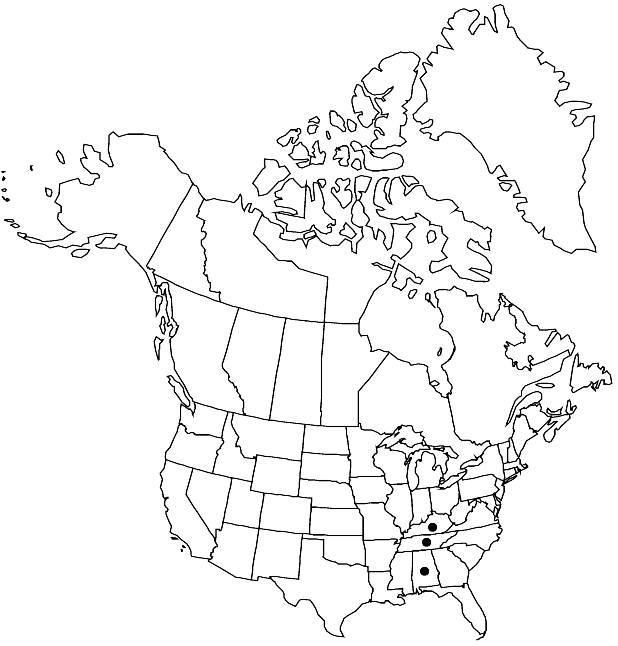Leavenworthia torulosa
Bot. Gaz. 5: 26. 1880.
Stems (when present) 1–2.5 dm. Basal leaves: petiole (1–)1.5–3.5 cm; blade (2–)2.7–7.5(–9) cm, lobes (0 or) 1–6 on each side, margins usually entire or shallowly dentate, rarely lobed, terminal lobe orbicular to broadly ovate, 0.5–1.1 cm × 5–12 mm, considerably larger than lateral lobes, margins entire or shallowly dentate. Fruiting pedicels: solitary flowers 30–80(–100) mm; racemes to 60 mm. Flowers: sepals suberect to spreading, narrowly oblong, 3–5.2 × 0.8–1.7 mm; petals spreading, white to lavender or, rarely, yellow, broadly spatulate, (5–)7–10 × (1.5–)2.5–4.5(–6) mm, claw yellow, (1.2–)2–3 mm, apex emarginate, apical notch 0.3–1.1 mm deep; filaments: median 3.5–4.7 mm, lateral 1.2–2.5 mm; anthers 0.7–1.4 mm. Fruits linear, (1.5–)2–3 cm × 2–4 mm, markedly torulose to submoniliform, latiseptate; valves somewhat thick; ovules 8–16(–18) per ovary; style 2.5–5 mm. Seeds 1.9–2.8 mm diam.; wing obsolete or to 0.1 mm wide; embryo slightly bent. 2n = 30.
Phenology: Flowering Mar–Apr.
Habitat: Cedar glades, pastures, seepy areas, thin soil over limestone beds, roadsides, old fields
Elevation: 150-300 m
Distribution

Ala., Ky., Tenn.
Discussion
Leavenworthia torulosa is known in Alabama only from Madison County and in Kentucky only from Warren County.
Selected References
None.